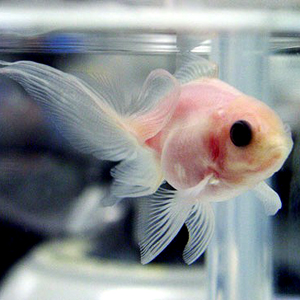
Buckyball ... Initially I thought that my connection is rather slow, because the second O in Google does not appear, but after a while it appeared the letter O in place a small ball spinning in the form of a hollow sphere, ellipsoid, or tube-shaped spherical fullerenes are also called buckyballs , and cylinders called carbon nanotubes or buckytubes.

Fullerene similar in the structure of graphite, which consists of stacked graphene sheets linked hexagonal rings, but can also contain pentagonal (or sometimes heptagonal) rings.
Before 1985, scientists knew only two forms of pure carbon structure of diamond and graphite. Both are wholly material composed of only carbon atoms. Each carbon atom in the diamond material, tied with four other carbon atoms form a tetrahedron pattern. This structure causes the diamond is very hard.
While in graphite, carbon atoms form a hexagonal layer of carbon-bound. Each layer hexagonal weakly bound with other hexagonal layer. This structure causes such as graphite is soft and oily. Structures like this also explains why graphite can be left in pencil on paper so that it can be used to write.
This day 25 years ago, exactly 4 September 1985 found a new structure of pure carbon in nature. This invention is answering questions in the beginning of the paragraph. New molecular structures called buckyball has a soccer ball-like pattern that consists of 20 hexagon (hexagonal) and 12 pentagon (segilima). The molecular structure is brought Smalley, Kroto, and Curl to the podium Prize in 1996.
This molecule consists of 60 carbon atoms with the chemical symbol C60. Meanwhile, a buckyball is taken from the name of an architect, R. Buckminster Fuller, who designed the dome of the new molecules with similar structures such as exhibition held in Montreal in 1967. Carbon molecules with structures similar to a soccer ball is also called by the name buckminsterfullerene or fullerenes.
The new molecule also has an effect like a ball, it can bounce and spin. Buckyball can rotate 100 million times per second. This molecule can be bounced if diempas to a hard surface such as steel. Then when squeezed or pressed, the molecule will return as the original form, like a rubber ball. And if compressed up to 70 percent of its original size, buckyball becomes harder than diamond doubled.
Curl, Kroto, and Smalley get these molecules at high temperature conditions and in a helium atmosphere. However, they only get a few products buckyball. In fact, it needs huge amounts to studying the nature and potential of these molecules in the future. Until the year 1990 discovered buckyball synthesis method produces a considerable amount of plasma method. This method was discovered by scientists from Germany and America.
When Smalley and his colleagues synthesize the buckyball or fullerenes, are not only found in C60 compounds. C60 is found in large quantities in bulk. Other structures found in the composition is less C70, C540, and other fullerenes containing hundreds of carbon atoms. In the synthesis method buckyball by American and German scientists, produced 75 percent C60, 23 percent of C70 'and the rest is a bigger carbon molecules. Since then, scientists have generally studied buckyball buckyball C60 compared with other more carbon atoms.
After the buckyball can be produced with large enough quantities, both Smalley and other scientists began to engineer, researching, and studying the properties of this unique molecule. One of the uniqueness is the empty space within the structure of the buckyball sphere. The researchers tried to fill it up with other atoms or ions to change the nature or the study bonding that occurs within the ball.
Various possibilities such as making plastics from the buckyball, carbon buckyball change into diamond at room temperature, as well as learn buckytube fiber or fiber-called nano-carbon (carbon nanotubes) have been carried out by researchers.
Like football players who will play ball in the field, researchers and scientists a variety of fields also play a soccer ball-structured molecules with different ways and rules in the laboratory on the pretext of science and learn the greatness of the Creator.






